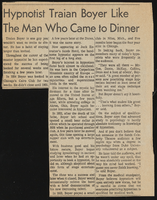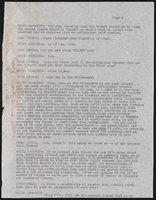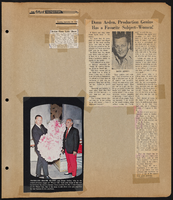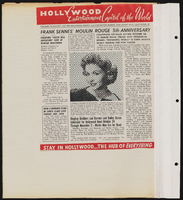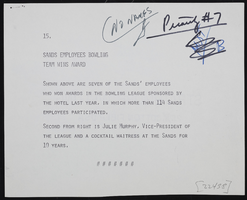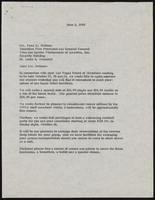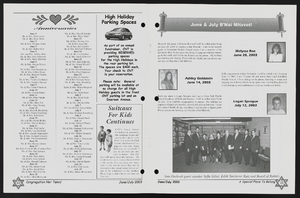Search the Special Collections and Archives Portal
Search Results
Su Kim Chung oral history interview
Identifier
Abstract
Oral history interview with Su Kim Chung conducted by Claytee White on March 11, 2021 for the Boyer Early Las Vegas Oral History Project.
Su Kim Chung is the Public Services Department Head of University of Nevada, Las Vegas Lied Library's Special Collections and Archives. This interview was conducted in part for the 20th year celebration of Lied Library. Su Kim first talks about the construction of Lied Library and what makes it special compared to the previous library building on campus. She then discusses her personal history and education that led her to UNLV, where she has now worked for 22 years. Her work involves manuscript curation, panel discussions with Las Vegas entertainers, and oral history collection among other activities. She has also written a book, Las Vegas Then and Now, that talks of the city's rich entertainment history.
Archival Collection
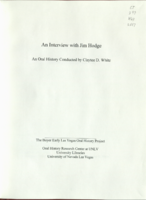
Transcript of interview with Jim Hodge by Claytee White, April 13, 2009
Date
Archival Collection
Description
Jim Hodge describes an active and success filled life in this narrative. Born and raised in the South, Jim enlisted in the Navy at the young age of 17, just as World War II was winding down. His primary job was that of a cook. He became smitten with the life of an entertainer after participating in a play and headed for Hollywood in 1952. It was there that he auditioned for Donn Arden, who organized and directed Las Vegas shows. Though he didn't get the part, he did get hired to be a singer for a show featuring Betty Grable. Thus his career was launched and would span the heyday of Las Vegas entertainment from the 1950s to the 1970s. Jim talks about the people, shows and places that touched his life. He also offers thoughts about the changes in the Vegas entertainment scene as well as shares his relationship with his church over the past 40 years.
Text

Relda W. Leavitt interview, March 18, 1976: transcript
Date
Archival Collection
Description
On March 18, 1976, collector David Steele Broussard interviewed Relda Whitney Leavitt (born April 3rd, 1917 in Saint Thomas, Nevada) at her home in Las Vegas, Nevada. In this interview, Mrs. Leavitt discusses growing up in Saint Thomas, Nevada before her family moved to Las Vegas. She also discusses moving to Las Vegas, Nevada and her family’s dairy business in Whitney, Nevada. She speaks about the different changes and growth she has seen in Las Vegas over the years.
Text

